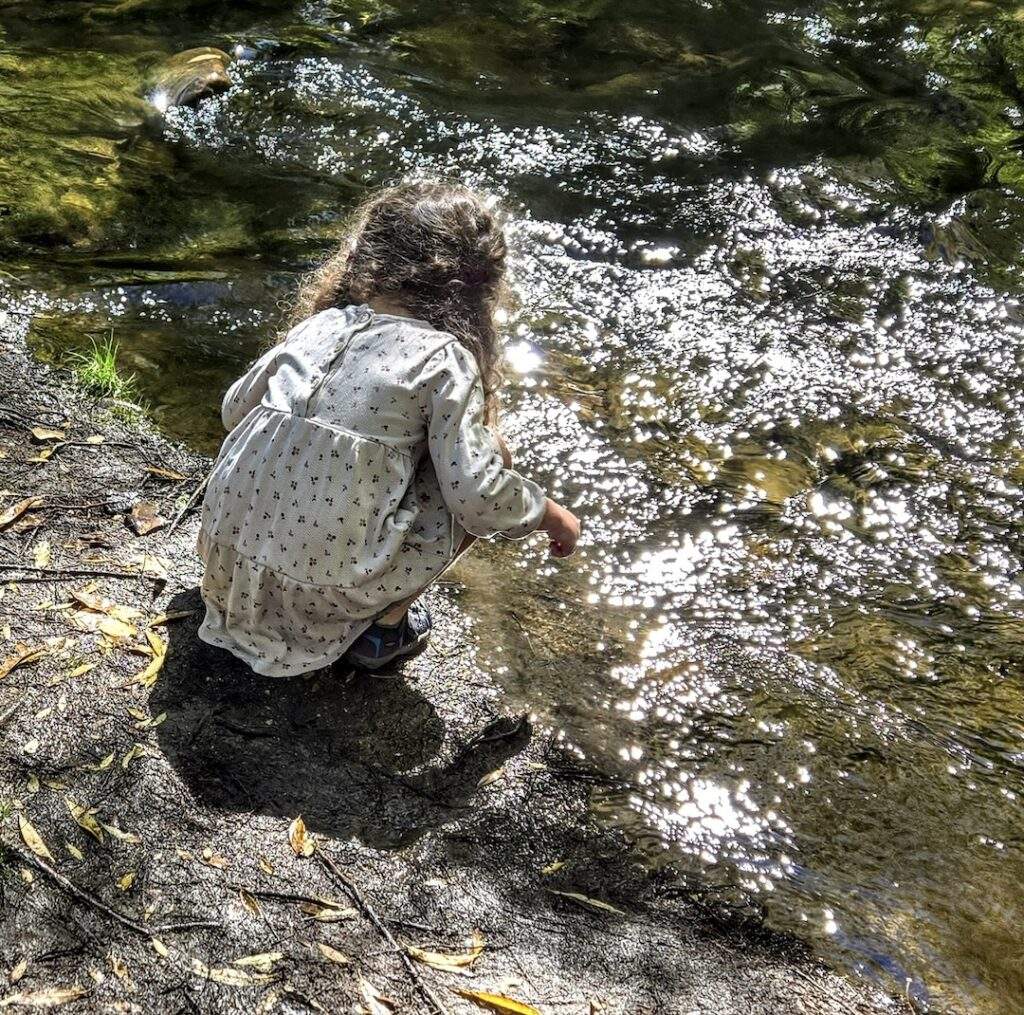A couple of weeks ago, I had the opportunity to experience the magic of the Boulder JCC Forest School. I was there because Gwen Tenney, a forest educator at the Boulder JCC, invited me to visit her classroom. Having heard about the Forest School for years, I was thrilled to witness it firsthand.
When I arrived at the JCC, I parked my car and followed a Google pin into the forest. I passed pigs, stepped over broken branches, and followed the sound of water until I found a group of children sitting quietly by the creek, each one drawing.
They were doing what Gwen calls “Sit Spot.” I recognized it from Jon Young’s Coyote’s Guide, a book that uses Indigenous wisdom to help educators think about mentoring children in nature. The idea behind the “sit spot” is you pick a spot in nature, come back to it regularly, and just spend time noticing what’s around you. As the seasons change and the child grows, a relationship develops between the child and that particular spot.
In their “sit spots”, some children sketched what they saw around them, like trees, birds, and the creek, but others depicted their imaginary world. One child drew a vacuum monster; another, an ostrich sniffing the sky.
After coming together for a group conversation, the children got up and started moving through the forest, each following whatever caught their attention. One girl crouched by the edge of the creek with a net and started skimming the water for insects. Two boys found a log that rocked like a teeter-totter. They stood on opposite ends of the log, trying to find balance. One child tucked herself into the crook of a tree’s roots, tracing the edge of a small plant with her fingers. Nearby, a group of boys took large sticks and slapped them on the surface of the water, just to hear the sound it made.
That day, the educators gave the children potion recipe cards with ingredients represented in images, asking them to collect items such as a smooth stone, a flower petal, a leaf, and a few drops of water for a heart potion. One girl had found some pink gems hidden near the creek, which was part of a treasure hunt that had been going on for a while in the forest program.
I asked one of the teachers what it was like to work in this kind of classroom. She explained, “The children love it here, but so do the adults. We’re regulated, and that supports the children’s work.”
A week later, I sat down with Mattie Schuler, the supervisor and original pioneer of the JCC’s Forest School. The program began as her capstone project in grad school. It started with just one day a week in the forest, but both she and the leadership team quickly saw what was happening: joyful learning.
Mattie also served on a Denver forest school board, and what she learned there would help shape what would become Boulder’s first forest school program. In 2019, they opened with 15 children, three teachers, and within three years, they had grown to two full classes. This year, they expanded again. The program became so popular that they had to implement a lottery system.
When I asked her what she believes makes forest school so successful, she described the rich provocations that nature offers children. She encourages her educators to wait and observe first, to see how the children use what nature has already provided them. She explained that if we give children time, we’ll notice they are already “building treehouses and forts.” She also mentioned that educators have their own curiosities and encourages them to share that enthusiasm with the children.
As Mattie continued to share her thoughts on the Forest School, I learned that this space is right for so many different kinds of children. Children with big energy can run, jump, and explore. Shy children can find the quiet they need. Timid children find courage and independence. Children are practicing resilience, discovering how to follow their curiosity, becoming careful observers, creative thinkers, and problem solvers. But my most important takeaway is the powerful learning dynamic that naturally happens when educators and children are on a shared journey of curiosity.
I am so glad I followed that Google pin into the forest. Thank you, Gwen, Mattie, Delaney, and Sarah, for sharing your magical forest classroom with me.





